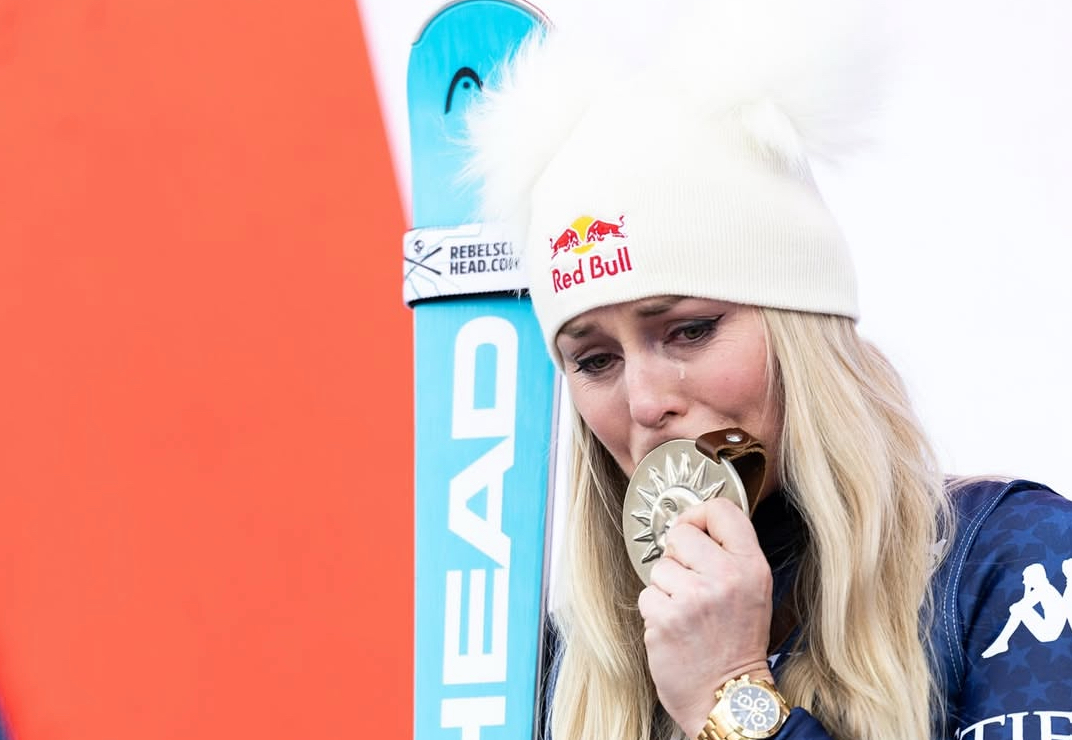
In a remarkable display of athleticism and resilience, Lindsey Vonn, at 40 years old, secured a Silver medal in the Super-G at the Audi FIS Ski World Cup Finals in Sun Valley, Idaho, on March 23. This achievement not only marked her first podium finish since coming out of retirement late last year but also established her as the oldest woman to podium in a FIS Alpine World Cup event.
Vonn’s return to competitive skiing has been nothing short of extraordinary. After a six-year hiatus, during which she underwent a knee replacement, many doubted her ability to compete at the highest level. Her performance in Sun Valley silenced critics and added a historic chapter to her illustrious career. Reflecting on her journey, Vonn expressed immense joy and relief, stating that she had “proved everyone wrong.”
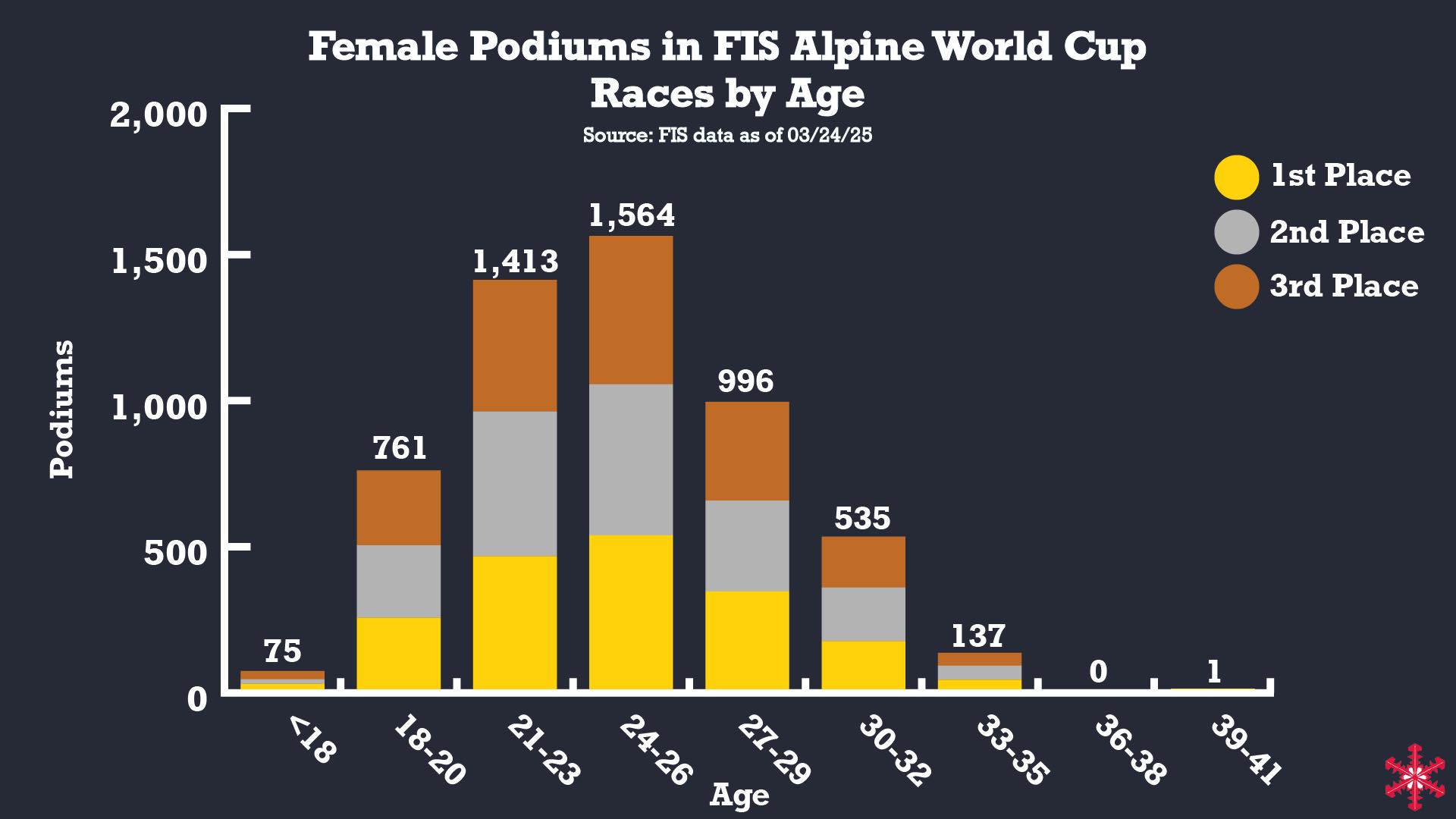
In fact, Sunday’s podium in Sun Valley was a testament to the enduring prowess of older, more experienced athletes. Joining Vonn were Switzerland’s Lara Gut-Behrami, aged 33 years, who clinched the Gold and overall Super-G season trophy, and Italy’s Federica Brignone, who at age 34 took Bronze. Brignone has been breaking her own record for being the oldest female winner with each victory this season and has now, in addition, become the oldest female skier to secure the overall FIS Alpine Ski World Cup season title. Previousyly, Austria’s Elisabeth Görgl held the age record for almost 10 years until it was broken this season by both Brignone and Gut-Behrami during the 2024-25 World Cup season.
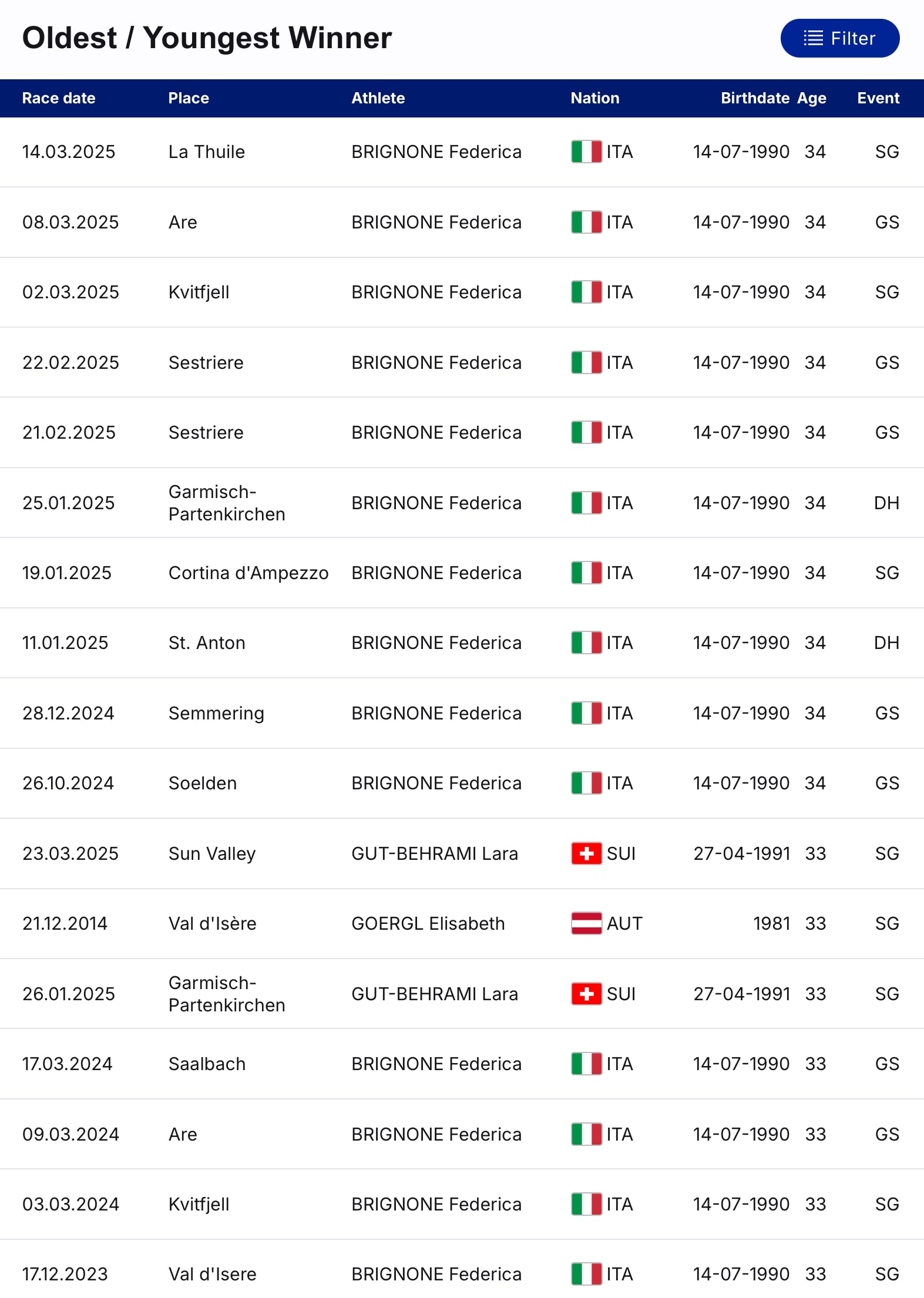
This shift toward older champions is not confined to women’s skiing. On the men’s side, athletes like Johan Clarey and Didier Cuche have defied age norms. Clarey, at 42, became the oldest male skier to podium in a World Cup event, while Cuche secured a World Cup victory at 37. These milestones challenge traditional perceptions of age and athletic performance and change the way athletes and coaches approach training and analyze career paths.
The trend of athletes excelling later in their careers is not limited to skiing. A comprehensive analysis by the ARC Centre of Excellence in Population Ageing Research (CEPAR) reveals that the average age of Olympians has risen over the past few decades. Since 1992, the average age of participants has increased by two years, from 25 to 27, with the median age rising from 23 to 25. This pattern holds true even when comparing sports common to both Olympiads and when excluding football, which imposes age limits on players.
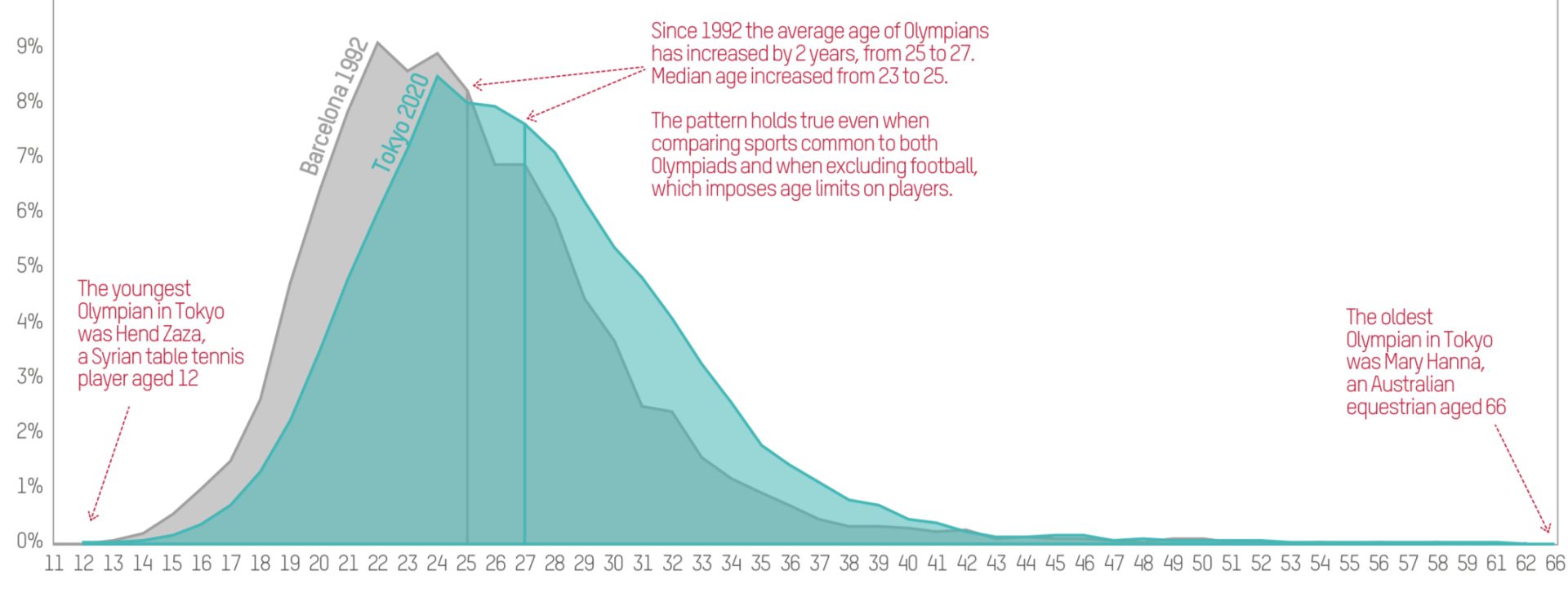
Several factors contribute to this shift. Advancements in sports science, nutrition, and training methodologies have enabled athletes to maintain peak physical condition longer. Enhanced recovery protocols and medical interventions, such as Vonn’s knee replacement, allow athletes to overcome injuries that might have ended careers in the past. The importance of functional strength training for winter sport athletes has been instrumental in pushing the age limits to new boundaries. Fitness protocols with balance and coordination work, prehabilitation to strengthen ligaments, tendons, and stabilizing muscles have emerged as key elements of modern training for winter sports athletes. Recovery protocols, such as cryotherapy, compression therapy, and mobility training, have become central to their regimen. These innovations have collectively produced stronger, faster, and more resilient athletes, enabling them to excel in the increasingly demanding conditions of modern ski racing.
Recent studies have shown that muscle tone in individuals who train consistently does not decrease until age 60. Older studies that described a loss in muscle mass past the age of 35 were conducted without considering people’s exercise regimes. It has been proven that individuals who train continuously do not experience the loss in muscle mass that inactive individuals experience and that skeletal muscle mass can be very well maintained and is comparable to that of younger people with regular exercise.
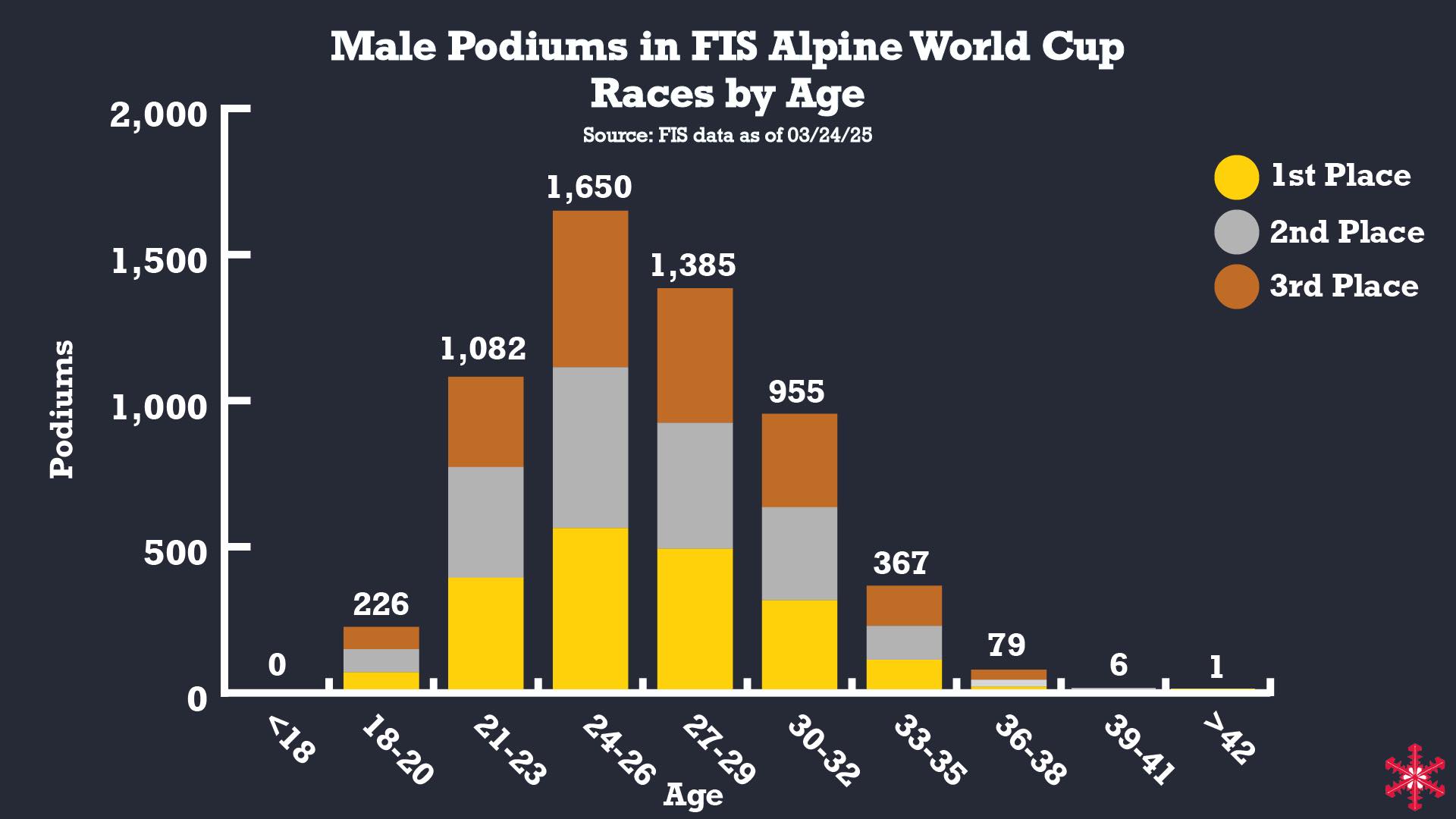
Moreover, the accumulation of experience could possibly also factor into Vonn’s strong performance in the speed disciplines. As a veteran athlete, Vonn can draw on years of experience in terms of tactical decision making and mental fortitude. When Vonn returned to the World Cup circuit, she emphasized, “I am stronger today than I ever was before. I believe in myself. No matter my age or my history. No matter what people may say, I am doing this for me. I don’t need to prove anything to anyone. I don’t need the spotlight or attention. I simply want to do something that brings me joy and to share that joy with my family, friends, team and all of you.” The impact of Vonn’s positive mindset cannot be underestimated, and many studies have shown that the psychological resilience and a positive mental attitude can dramatically impact an athlete’s performance and overall career longevity.
In Alpine skiing, a sport that demands both physical prowess and strategic acumen, the trend toward older competitors is particularly pronounced. A few decades ago, athletes would retire in their early to mid-20s. And while most podiums are claimed by athletes in their mid-20s, the recent successes of Vonn, Brignone, and Gut-Behrami illustrate that a shift is afoot and that age is becoming less of a limiting factor. Their achievements may inspire a reevaluation of career longevity and peak performance timelines within the sport. However, it’s essential to recognize the individual variability in athletic careers. While some athletes thrive well into their 30s and 40s, others may peak earlier due to factors like injury history, personal motivation, and the specific physical demands of their sport.
Lindsey Vonn’s historic podium finish serves as a powerful reminder that age, while influential, is not an absolute determinant of athletic potential. Her journey underscores the importance of resilience, passion, and adaptability in achieving excellence. As sports continue to evolve, the narratives of veteran athletes like Vonn will likely become more prevalent, challenging conventional wisdom about aging and performance.